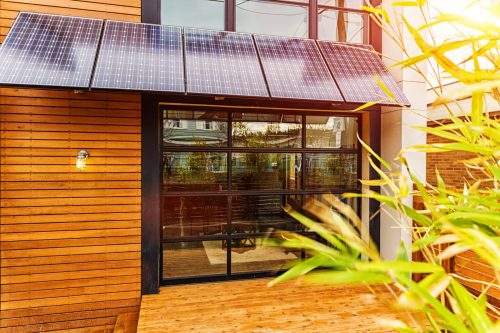
Looking Beyond California: Zero Energy Housing in the United States
In only a year and a half, if you buy a house that’s just been built in California, you will be buying a house designed for the future: highly energy efficient, and a producer of clean, solar energy. Also, chances are good that it will be all-electric and have energy storage.
This is not a mere premonition, or even a prediction. It’s a statement of fact. Earlier this month, California voted unanimously to update its building code to require solar panels and high-efficiency design for nearly all new homes starting in 2020.
While the Net-Zero Energy Coalition currently estimates that the United States has over 5,000 net-zero energy (NZE) single-family homes, and over 7,000 NZE multifamily units, this new requirement will add approximately 100,000 homes every year that are close to NZE.
As I stated before on CNBC, this shift is good not only for supporting the clean energy transition, but also for improving community resilience. Efficient homes provide greater comfort and safety from extreme weather, and solar photovoltaics (PV) can be installed with storage or with special inverters to allow power production even when the grid goes down.
What about the rest of the country?
While California has clearly taken a strong leadership role on this issue, how relevant is this to the rest of the country? California’s utility costs and climate make it a good candidate for this kind of solar mandate. Is this kind of thing actually cost-effective or appropriate for other places in the United States?
It’s already happened outside of California: South Miami passed a similar measure that went into effect last September. Maybe support for solar somewhere in Florida isn’t that surprising either. Still, it’s notable that Florida got a start in the City of South Miami. The localities of San Francisco, San Mateo, Santa Monica, and others passed similar requirements before the state requirements went into effect in California.
Cities have been the places where these policies get their start. Individual cities are in a good position to lead these efforts and prove them out to a broader audience. They test the policies’ political feasibility, as well as different structural approaches to such policies, including whether and how they focus on issues like electrification, storage, and efficiency.
Is it cost-effective?
The cost of building homes to an NZE or NZE-ready standard will vary greatly for different locations across the country. Some of the factors involved are utility costs, climate, and construction or installation costs. Many people assume that an NZE home will be prohibitively expensive, but that is not the case.
Detractors of the California requirements say that NZE homes will add to the cost of housing at a time when the state is already grappling with a lack of affordable housing. But this argument misses two key points:
- Additional cost comes from the solar PV, and builders can offer that through a leasing structure that requires no up-front cost.
- The new standard saves more money in bills than it requires in up-front costs. The end result is that this solution could help make housing more affordable than the status quo.
Also, if California and other states enable residential property assessed clean energy (PACE) financing for new construction, these improvements can all come at no up-front incremental cost for builders and home buyers.
Is this true outside of California?
In our recent conversations with net-zero energy home builders across the country, we confirmed that net-zero energy homes can be economically beneficial in a wide range of settings. We are now preparing a full cost analysis for net-zero energy (with solar PV) or net-zero energy ready (without solar PV) homes in a variety of places around the country.
Our preliminary results indicate that NZE homes cost 5–10 percent more than standard construction, but that energy savings will offset that cost to make them cost-effective. Better yet, NZE-ready homes appear to be possible with very little cost premium at all. Creating more options for community solar, solar leasing, and power purchase agreements could put NZE homes in easy economic reach across the United States. And even full NZE homes may be close enough to economical for most parts of the country now.
Rocky Mountain Institute’s full report on NZE costs and cost variations across the country is scheduled for release in July 2018. Keep yourself posted on the results to learn more about RMI’s NZE homes cost research.
RMI will also be working with other cities to lead the way on cost-effective solutions for creating more housing stock that will better serve the community. Cities have led the charge on this issue so far and, with their leadership, we can expect to see more homes being built that provide these benefits.